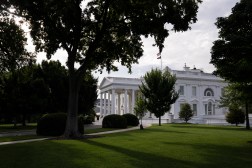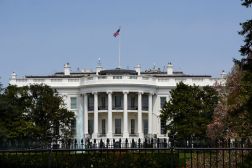Just six weeks after releasing a request for proposals, the Department of Health and Human Services Buyers Club — an agile approach to making procurement more effective — awarded its first contract to close out fiscal year 2014. While the program is still being evaluated, HHS Buyers Club has been cleared to ramp up.
Mark Naggar, the program manager basically running HHS Buyers Club as a one-man shop with department support, said the consensus was supportive of the initial contracting experience. Naturally, the next step is to take things further.
“We are just ramping up, to be honest,” Naggar said. “[HHS’] IDEA Lab has revised its website, we are redesigning the landing page for the Buyers Club, I’m trying to circulate this revised acquisition diagram and get more feedback on it, [and] we are communicating and collaborating across federal government.” So far, outreach includes a federal-only group email list with about 120 members, and, internally, HHS’ Buyers Club has about 70 members who interact via the department’s social networking tool called Yammer.
“We’re gradually building upon everything,” he said. “A lot of the methods are sort of set. We’re going to make improvements on different ones. We have a pipeline of groups who want to work with us. We’re starting to do a lot more outreach. And I’m finishing the strategy and action plan, hopefully this week, that will be put on the landing page. We’re extremely busy right now. And this is really just the beginning.”
HHS’ Assistant Secretary for Planning and Evaluation used Buyers Club to procure a Web content management system, public-facing Internet sites, internal intranet site redevelopment, database reconstruction, and a complete migration and integration of everything. Just as the fiscal year came to a close, ASPE awarded the contract to Akira Technologies Inc., selecting it from an initial pool of 24 companies that was narrowed to just five. Those five received $10,000 each to create working prototypes from which the agency made its final decision, rather than just picking from a stack of promising proposals.
While many agencies fear the unknown risks in a new procurement methodology, Naggar said the ASPE contracting specialists and officers saw this “two-step, down-select” procurement style as a success in that it reduces “risk substantially more because they’re able to see work from companies beyond just what their capability statements and their proposals say they can do.”
Just like test driving a car before buying it rather than trusting the specification sheet taped to the window, this process allowed ASPE a chance to see what these companies could do in a short time and gave it five prototypes to base its final decision on.
“To me, that seems like a reduction of risk,” Naggar said. “There’s a lot to be said about making incremental investments before you devote and obligate a lot more of the taxpayers’ money into things. So we’re hoping this kind of approach will enable people to sort of think out of the box.”
Now, Naggar said it’s time to evaluate the initial procurement to see what went well, what didn’t and create a use case from it, which he hopes to release in the near future.
“We want to build a use case out of everything we do with the Buyers Club,” he said. “We know that there is no perfect acquisition and it’s our intent under all of this to improve along the way and iterate. So we want to learn from everyone who participated.”
While much of the focus remains on HHS Buyers Club itself due to its novel approach to procurement, Naggar said the biggest task — the specific reason Buyers Club was started — still lies ahead for ASPE: keeping this technology on track to be effective. “The original purpose of the Buyers Club is the fact that projects in excess of $10 million are either challenged or they fail for various reasons,” he said. “While this particular one is not at that level, it really doesn’t matter. We want to tackle all of the projects with the same mindset of ensuring success.”
As ASPE works on that, Naggar intends to spread the gospel of Buyers Club through education, outreach and end-user engagement. “For me this is the exciting phase because you get to talk to people and figure out what works and what doesn’t work,” Naggar said in preparation for the other projects HHS Buyers Club has in its pipeline. And as he’s been talking with people who’ve been operating in procurement silos within government, he said “the only place to go is up. At the end of the day, we’re trying to save the taxpayer money and maximize value, and if we can find a way or multiple ways that work, we’re going to do that and put as much effort as we can into it.”








